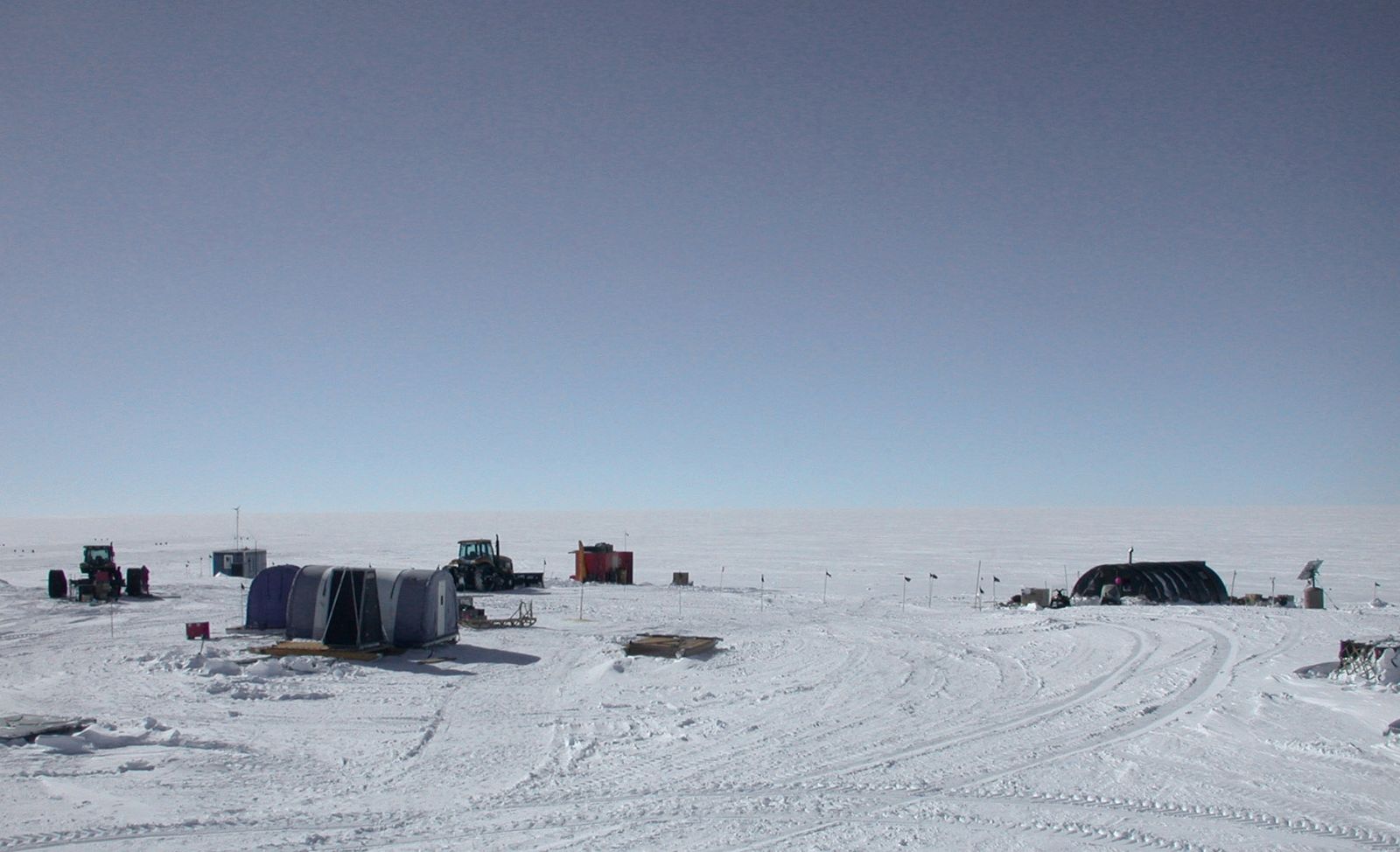Difference between revisions of "Template:POTD protected"
Westarctica (talk | contribs) |
Westarctica (talk | contribs) |
||
| Line 1: | Line 1: | ||
{| role="presentation" style="margin:0 3px 3px; width:100%; text-align:left; background-color:transparent; border-collapse: collapse; " | {| role="presentation" style="margin:0 3px 3px; width:100%; text-align:left; background-color:transparent; border-collapse: collapse; " | ||
|style="padding:0 0.9em 0 0;" | [[File: | |style="padding:0 0.9em 0 0;" | [[File:Byrd field camp.jpg|300px|thumb]] | ||
|style="padding:0 6px 0 0"| | |style="padding:0 6px 0 0"| | ||
'''[[ | '''[[Byrd Station]]''' is a former research station established by the United States during the International Geophysical Year by the U.S. Navy during [[Operation Deep Freeze]] II in central [[Marie Byrd Land]]. The station was named in honor of American [[Antarctic]] explorer Admiral [[Richard E. Byrd]]. | ||
While most research stations in Antarctica are placed along the coastal regions, Byrd Station is located far inland, but not near any mountains or other geographic features that might be of value to science. [[George R. Toney|George Toney]], the scientific leader at Byrd Station in the 1957, speculated that the reason for the camp’s inland location was that it was “spang in the middle of a huge unclaimed wedge of Antarctica where the United States might well launch a claim later on, if it came to that.” | |||
<p><small>Photographer: | |||
<p><small>Photographer: Mark Sabbatini</small></p> | |||
[[:Category:Images|'''(More Images)''']] | [[:Category:Images|'''(More Images)''']] | ||
<div class="potd-recent" style="text-align:right;"> | <div class="potd-recent" style="text-align:right;"> | ||
Revision as of 04:09, 26 July 2024
|
Byrd Station is a former research station established by the United States during the International Geophysical Year by the U.S. Navy during Operation Deep Freeze II in central Marie Byrd Land. The station was named in honor of American Antarctic explorer Admiral Richard E. Byrd. While most research stations in Antarctica are placed along the coastal regions, Byrd Station is located far inland, but not near any mountains or other geographic features that might be of value to science. George Toney, the scientific leader at Byrd Station in the 1957, speculated that the reason for the camp’s inland location was that it was “spang in the middle of a huge unclaimed wedge of Antarctica where the United States might well launch a claim later on, if it came to that.”
Photographer: Mark Sabbatini |
